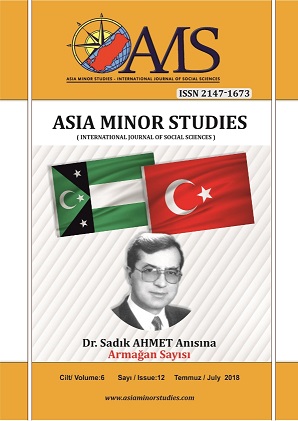II. Abdülhamid Döneminde Açilan Sağlik Kurumu Kuduz Tedavihanesi (Dâûlkelp Ameliyathanesi)
Rabies Treatment Health Center Opened in the II Abdulhamıd Period (Dâûlkelp Operating Room)
Author(s): Ahmet UyanıkerSubject(s): Governance, Social development, Health and medicine and law, 19th Century, The Ottoman Empire
Published by: Kilis 7 Aralık Üniversity
Keywords: Ottoman State; II Abdülhamid; Pasteur; Microbiology; Rabies;
Summary/Abstract: Epidemic diseases that continue at certain intervals in the world have become one of the important issues of the states. European states focused on preventive health care since the late nineteenth century due to infectious diseases such as cholera outbreaks, have accelerated the developments in microbiology science and have started to institutionalize health organizations. Due to its geographical position, which contained trade routes connecting the Balkans, Caucasus, Anatolia, the Arabian Peninsula, Iran, North Africa and the Eastern Mediterranean, the Ottoman State played a role in promoting administrative, military and commercial social mobility and at the same time this situation facilitated the dissemination of epidemic diseases. Although the state took some measures against these diseases, especially the quarantine measures, cholera outbreaks especially in the 19th century caused the death of thousands of people and were influential in both Istanbul and Anatolia. This has led the Ottoman State administrators and health men to follow developments in microbiology in Europe. In 1885, Pasteur's first rabid vaccination application provoked a great influence in Europe. The development of bacteriology was perceived by Abdülhamid as the basis of the preventive medicine, and after Pasteur's invention, a health team from military medicine was created and sent to Paris for training from Pasteur. Having completed his studies in 1887 and returning to Istanbul, the health team produced the domestic rabies and flower vaccine by establishing the first microbiological studies laboratory in the Ottoman State. Patients treated with this rabies vaccine in the Ottoman clinic have been treated in Turkey. This institution was modeled in the Ottoman Empire, in Damascus in 1897 and in 1905 there was a rabies treatment center in Thessaloniki. These treatment centers were followed by new ones in the following years. Sivas rabies treatment center opened in Sivas in 1917 prepared flowers, typhus and plague vaccine for Turkish National Army in the National Struggle. This study will focus on the studies carried out in the first modem microbiology laboratory established in the Ottoman Empire and its contributions to Ottoman health and science life.
Journal: Asia Minor Studies
- Issue Year: 2018
- Issue No: 12
- Page Range: 190-200
- Page Count: 11
- Language: Turkish

